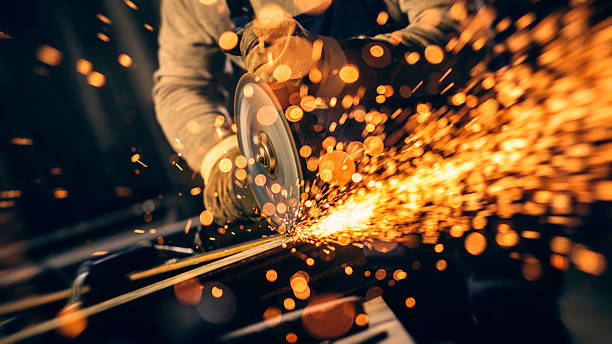Table of Contents
In the world of metal fabrication, precision reigns supreme. Transforming raw steel into intricate components requires a delicate dance between cutting-edge technology and the workhorse of the industry: the forklift. While custom steel cutting processes steal the spotlight with lasers and robotics, the unassuming forklift plays a vital role, ensuring a seamless workflow from raw material to finished product.
The Cutting Edge: Unveiling Custom Steel Cutting Techniques
Custom steel cutting offers unparalleled flexibility when crafting unique metal components. Gone are the days of limited designs; today’s fabrication shops boast an arsenal of techniques, each with its strengths:
- Plasma Cutting: This versatile method utilizes a superheated plasma arc to melt and expel steel. Ideal for thicker plates, it delivers clean, fast cuts at a competitive price point.
- Laser Cutting: For intricate details and razor-sharp accuracy, laser cutting is king. A focused beam of light melts and vaporizes the steel, resulting in minimal heat distortion and precise, clean cuts.
- Waterjet Cutting: An eco-friendly alternative, waterjet cutting uses a high-pressure stream of water mixed with an abrasive garnet to erode the steel. It excels at intricate cuts on a variety of materials, including stainless steel and aluminum.
These methods, alongside others like oxy-fuel cutting and high-definition plasma cutting, provide fabricators with the tools to translate any design into reality. But how do these precision-cut pieces move through the shop floor?
Enter the Forklift: The Unsung Hero of Steel Fabrication
While custom steel cutting takes center stage, the unsung hero of the fabrication process is the forklift. This versatile machine keeps the workflow moving efficiently by performing a multitude of tasks:
- Material Handling: Forklifts are the muscle of the shop floor. They handle heavy steel plates, effortlessly transporting them from storage to the cutting machines.
- Stacking and Organizing: With their ability to lift and maneuver, forklifts ensure organized storage of raw materials and finished products. This optimizes space usage and facilitates easy access for production.
- Loading and Unloading: Forklifts play a crucial role in loading and unloading trucks that deliver raw steel and pick up finished products. Their reach allows them to access trailers of all sizes.
- Safety: Forklifts contribute significantly to workplace safety by eliminating the need for manual lifting of heavy steel plates. This reduces the risk of injury and keeps workers safe.
The capabilities of a forklift extend beyond basic lifting. Modern forklifts offer a range of attachments that enhance their functionality:
- Rotators: These attachments allow for the easy rotation of steel plates, making them ideal for applications like pipe cutting.
- Side Shifters: By hydraulically shifting the forks sideways, side shifters enable precise positioning of metal sheets on cutting tables.
- Fork Extensions: For handling oversized steel components, fork extensions provide additional reach, ensuring the safe maneuvering of wide sheets.
The seamless integration of custom steel cutting technology with the capabilities of the forklift creates a powerful production environment.
The Perfect Synergy: Optimizing Workflow
The synergy between custom steel cutting and the forklift unlocks several advantages:
- Reduced Lead Time: By streamlining material handling and ensuring efficient movement of steel throughout the fabrication process, forklifts contribute to faster production times.
- Enhanced Safety: Forklifts eliminate the need for manual handling of heavy steel, minimizing the risk of workplace injuries.
- Improved Efficiency: The efficient movement of materials optimizes floor space and keeps production lines running smoothly.
Cost Control: Reduced labor costs for material handling and improved efficiency translate into overall cost savings for fabrication projects.



